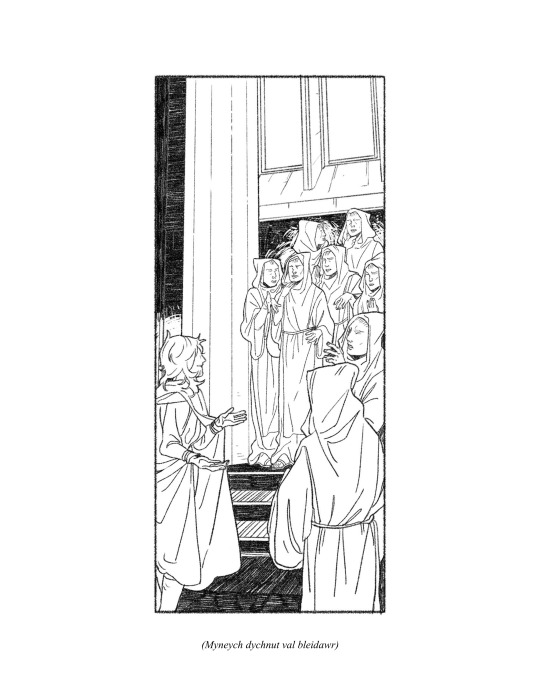#court composition
Explore tagged Tumblr posts
Text
The Catholic Seat: Religion and Identity in the Supreme Court - Insights from Chapter 8 of The Nine by Jeffrey Toobin
In Chapter 8 of Jeffrey Toobin’s The Nine, titled “The Catholic Seat,” the focus shifts to the role of religion, specifically Catholicism, within the U.S. Supreme Court. This chapter explores the historical and contemporary significance of the Court’s religious composition, with a particular emphasis on the justices who have occupied what has been informally known as “the Catholic seat.” Toobin…
#Antonin Scalia#Catholicism#Clarence Thomas#court composition#Jeffrey Toobin#judicial philosophy#law#religion in the judiciary#religious identity#Supreme Court#The Nine#U.S. government#William Brennan
0 notes
Text

Brown eyed boy
#color composition… hmm#either way. Jean the poor bby is under so much bisexual stress#fan art#my art#aftg#tsc#the sunshine court#jean moreau#jeremy knox#jerejean
2K notes
·
View notes
Text

i can't believe i forgot to post the angst.
edited to add: context (i uh. forgor--) Rhynn's a nightmare courtier and some like. 15 years ago did some Fucked Up Shit to Av. which is why he looks the way he looks now. because i looked at the nightmare court and dialled it to 11 ok? ok :}
#gw2#guild wars 2#my art#my characters#sylvari#oc: abhartach#oc: rhynn#nightmare court#pardon me i'm still trying to learn how to draw characters interacting w each other#and scene composition#anyway all of u people that simp over rhynn (i've SEEN you) the man's a bastard#actually. that probably won't deter people anyway
63 notes
·
View notes
Text

I would smoke weed with him....
#dndads#dungeons and daddies#glenn close#here's a treat for you guys ignore the weird composition and just stare at the handsome man's face#he could be a better father yes but I will stand by the fact that he's not a “bad person” fuck the court#fun fact the traditional sketch for this was like the first thing I ever drew for dndads weeks ago....what does this say about me 😳#my art
213 notes
·
View notes
Text



Some illustrations I made for a module as interpretations of some passages from the Welsh poem 'Preiddeu Annwn'
#yippie!!! yahoo!!!!#i wrote 8k words on this im gonna PASS OUT NOW#how do i tag this??#posting this feels like such an intense ‘and now for something completely different’#taliesin#preiddeu annwn#annwfn#welsh#celtic#first illustration caption: maintained was Gwair’s prison in Caer Siddi#second: Lleog’s flashing sword was thrust into it#(though I made it a spear for a better composition)#third: monks congregate like wolves#quick explanation of Gwair:#likely either Gweir ap Gweirioed or Gweir ap Gwystyl#or a combo of both#Gweirioed is known for being a prisoner likely of the Isle of Wight or Lundy island#potentially connected to the first branch of the Mabinogion#Gwystyl is named in peredur as one of three knights from Arthur’s court and is frequently referenced for his dismal dispositation and sadnes#caer siddi is likely meant to be a reference to the fae#mead feast fort and several other names are given to it later#other translations have been Mound Fort (like fairy mound)#the fort is in the otherworld/annwn#Arthur and a retinue of men went to the otherworld to#supposedly retrieve a cauldron#specifically a cauldron that is one of the thirteen treasures of the island of Britain#likely the cauldron of dyrnwch the giant#welsh literature#medieval literature
62 notes
·
View notes
Text
CHARACTER THEME MUSIC COMMS NOW OPEN!!

Hi all! I opened my character theme comms for the first time today and thought I'd share the word here! I only have one slot left, but sharing this for visibility would REALLY help me out so others can learn about them and stay updated if they're interested! If you're interested and want to commission, send me a message on Twitter! You can also DM me on Twitter or reply to the Twitter post if you would like to be tagged next time comms open up!
Learn more from my Twitter post here: https://x.com/ignatiuscrose/status/1809649938713964579
TOS: https://crosemusic.carrd.co/
SoundCloud Character Themes playlist: https://soundcloud.com/ignatiuscrose/sets/character-themes
#original character#ocs#oc#art#commissions open#music#commissions#art commissions#music commissions#character theme#digital art#musicblr#composition#fl studio#soundcloud#music production#court art#my art#please share!#i opened these because i had to spend a significant chunk of my financial aid money on vet expenses#and my cat will be having recurring expenses so having money set aside for that will seriously help. it's already looking like im going to#have to take out student loans so i'd like to mitigate that as much as possible.#tumblr#artists on tumblr#small artist
18 notes
·
View notes
Text
Tempête amoureuse
Je m'étais promis de ne plus m'attacher à quelqu'un
Parce que il y a eu trop de faux espoirs et mon coeur se renferme toujours
Les yeux ne mentent jamais mais les apparences peuvent être trompeuses
Lorsqu'il me regarde suis-je vraiment celle qui souhaite construire une histoire ?
Chaque regard est une admiration de quelque chose qui nous plaît
J'ai des doutes
Peut-il aimer une fille comme moi ?
Mon coeur vibre dès que je le vois
Se déclenche comme une tempête amoureuse
Je me perds toujours dans son regard et je souris dès qu'il me parle
Il est vraiment timide et j'aime les garçons timides
Quand mon coeur vibre c'est comme si je pouvais entendre les vibrations de son coeur
Il est peut-être celui que j'attendais depuis tout ce temps
Mais comme d'habitude je ne vais pas encore écouter mon coeur
Il n'est pas mon genre
Mais j'ai pas envie de me forcer
Quand un mec ne m'intéresse pas
Mais celui-ci est différent il ne m'intéresse pas mais il est beau et mignon
C'est le tourbillon dans mon coeur
Je contacte toutes mes copines pour qu'elles me disent ce qu'elles ont pense de lui
Il est venu alors que moi j'attendais personne
Peut-il aimer une fille comme moi ?
J'aimerai tellement lire dans ses pensées
Je me perds dans son regard
Je suis un tourbillon de l'amour
Dans cette tempête amoureuse
Qui devient un long-métrage où les deux personnages sont des étrangers
Mon coeur veut s'ouvrir à lui
Mais je retiens toujours que les apparences peuvent être trompeuses
#artists on tumblr#poetry#santé mentale#poems on tumblr#writers on tumblr#texte français#écrire#french#ecriture#littérature française#relation amoureuse#amour#couples d amour#french poetry#poesie#love poem#poets on tumblr#writers and poets#artiste#composition#je te laisserai des mots#motivation#texte court#textes en poème#texte#texte libre#amoureux#philosophie#psychology#psychologie
3 notes
·
View notes
Text


youtube
youtube
Was X-Men: The Animated Series’ theme music PLAGIARIZED??? 🎶
#fun fact#fun facts#trivia#comics#comic books#marvel#marvel comics#marvel comic books#marvel characters#marvel superheroes#x-men#x men#x men comics#x men the animated series#x men tas#cartoon#animated series#theme song#theme music#opening theme#plagiarism#plagiarizing#linda#court case#ron wasserman#making music#music composition#music composer
4 notes
·
View notes
Text
Q&A: Undergraduate admissions in the wake of the 2023 Supreme Court ruling
New Post has been published on https://thedigitalinsider.com/qa-undergraduate-admissions-in-the-wake-of-the-2023-supreme-court-ruling/
Q&A: Undergraduate admissions in the wake of the 2023 Supreme Court ruling


Earlier today, MIT Admissions released demographic data about the undergraduate Class of 2028, the first class of students admitted after the Supreme Court’s decision in Students for Fair Admissions (SFFA) v. Harvard that banned the consideration of race in undergraduate admissions. As Dean of Admissions and Student Financial Services Stu Schmill ’86 anticipated in a blog post last June, the court’s decision has resulted in a decline in the proportion of enrolling first-year students who are members of historically under-represented racial and ethnic groups.
MIT News spoke with Schmill about this change, why diversity matters for the MIT education, and what happens next; Schmill also wrote a personal reflection on the MIT Admissions blog.
Q: What is the impact of the Supreme Court’s decision on MIT’s Class of 2028?
A: Last June, the Supreme Court ruled that colleges and universities that receive federal funding may no longer consider race in undergraduate admissions decisions. As I explained in a blog post at the time, we expected that this would result in fewer students from historically underrepresented racial and ethnic groups enrolling at MIT. That’s what has happened.
As a baseline, in recent years around 25% of our enrolling undergraduate students have identified as Black, Hispanic, and/or Native American and Pacific Islander. For the incoming Class of 2028, that number is about 16%. (For comparison, federal data show that 45% of K-12 students in American public schools are classified as members of these groups.)
While this is a substantial change in the demographic composition of the Class of 2028 compared with recent years, I want to be clear that it does not bring any aggregate change in the quantifiable characteristics we use to predict academic success at MIT, such as performance in high school or scores on standardized tests. By these measures, this cohort is no more or less prepared to excel in our curriculum than other recent classes that were more broadly diverse.
I emphasize this essential fact because many people have told me over the years that MIT ought to care only about academic excellence, not diversity. But every student we admit, from any background, is already located at the far-right end of the distribution of academic excellence. In my time as dean, we have considered only applicants who meet our extremely high threshold of academic readiness . Recognizing the substantial educational benefits of diversity, we then worked to assemble from that highly qualified group a class that reflected both breadth and excellence in its collective interests, aptitudes, and experiences.
The evidence of our success in achieving both academic excellence and broad diversity is in our outcomes, both on and beyond our campus. In recent years, as MIT has grown more diverse, collective academic performance has improved, as have retention and graduation rates, which are now at all-time highs for students from all backgrounds. At the same time, according to data from the American Society for Engineering Education, over the last 10 years MIT has graduated more engineers from historically underrepresented racial and ethnic groups than any other private college or university (and almost all public universities) in the United States, while at the same time being widely regarded as the world’s leading STEM institution and an important engine of innovation. These simultaneous achievements by our community represent a synthesis of — not a tension between — diversity and excellence.
Q: Why does diversity matter in an MIT education?
A: I am convinced, from empirical data and personal experience, that the MIT education is strongest when our student body is, above a high bar of academic excellence, broadly diverse.
Any MIT alum can tell you that they learned as much from their peers as their professors; certainly that was as true for me as a Course 2 [mechanical engineering major] in the 1980s as it is for my advisees today. When you bring together people with different ideas and experiences who share common interests, aptitudes, and match for MIT’s mission, they contribute their individual talents to collective excellence.
We also need this diversity in order to attract the very best students. As MIT has become more diverse, more of the most talented students in the country from all backgrounds have chosen to enroll at MIT — and they specifically tell us in surveys that attending a diverse institution is important to them and that they value this quality in their MIT experience.
It should not really be surprising that today’s students prefer a diverse campus community: They come from the most multiracial, multiethnic, multicultural generation of Americans that has ever existed. So another reason we care about diversity is that it makes us the strongest magnet of talent for the next generation of scientists, engineers, and knowledge-creators.
Q: Why did MIT need to consider race in the past to achieve diverse classes?
A: As we argued in an amicus brief in the SFFA case, the educational benefits of diversity are well established. Empirical evidence demonstrates that what matters for creativity and innovation is having highly qualified people with a wide variety of experiences and backgrounds working together as a team to generate new solutions to hard problems.
Unfortunately, there remains persistent and profound racial inequality in American K-12 education, and it is most pronounced in STEM. This means that carrying the diversity of American public schools forward into higher ed is difficult from the word go.
Let’s start with these troubling facts: According to federal data, among public high schools where 75% or more of students are Black and/or Hispanic:
nearly two-thirds do not offer calculus;
more than half do not offer any form of computer science; and
nearly half do not offer any form of physics.
Research shows that students who do not have the opportunity to build a strong foundation in math and science in high school are much less likely to succeed in graduating with a degree in STEM. Meanwhile, research from Stanford University’s Educational Opportunity Project shows that school segregation — which is strongly associated with achievement gaps — has steadily increased since the early 1990s. By some measures, school segregation now approaches levels not seen since Brown v. Board of Education 70 years ago.
In the everyday work of the MIT Admissions office, we see firsthand the startling extent of ongoing educational inequality in the U.S.: Whether we are out on the road or at home reading applications, we can see differences in opportunity from state to state, district to district, school to school, and even sometimes within schools.
We have tried to help close these gaps by directing prospective students toward free resources to help them better prepare for college-level STEM work, whether at MIT or anywhere else. In my blog post today, I talk about MIT’s long history of broadening access to educational opportunity to students from all backgrounds. I believe MIT can, will, and must do even more to open the aperture of opportunity in the future.
Q: What does all this mean?
A: Well, before the SFFA decision we were able to use race as one factor among many to identify well-prepared students who emerged from the unequal K-12 educational environment. We could see that these students met our high academic standards of excellence, were well-matched to our education, and would thrive at MIT.
Following the SFFA decision, we are unable to use race in the same way, and that change is reflected in the outcome for the Class of 2028. Indeed, we did not solicit race or ethnicity information from applicants this year, so we don’t have data on the applicant pool. But I have no doubt that we left out many well-qualified, well-matched applicants from historically under-represented backgrounds who in the past we would have admitted — and who would have excelled.
I want to emphasize that this change in the composition of our incoming class is not due to our reinstated testing requirement. In fact, the class we admitted last year under the testing requirement had the highest proportion of students from historically underrepresented racial and ethnic backgrounds in MIT history, because universal testing helped us identify objectively well-qualified students who lacked other avenues to demonstrate their preparation. As I explained at the time, standardized tests are certainly imperfect, but they are, in important respects, less unequal than other things we can consider.
We will continue to use the tests to help identify students who could not otherwise demonstrate their preparation for our education; however, the SFFA decision limits our ability to select, from among the well-qualified pool of applicants, a class that purposefully draws from a broad range of backgrounds.
Q: Where does MIT go from here?
A: Given the clear educational benefits, we still consider many kinds of diversity: prospective fields of study and areas of research, extracurricular activities and accomplishments, as well as economic, geographic, and educational background — just not race.
After the decision, we responded with expanded recruitment and financial aid initiatives designed to improve access to MIT for students from all backgrounds. These efforts include a new targeted outreach program to identify and encourage students in rural America to apply to MIT. They also include a new policy under which most families earning less than $75,000 a year pay nothing to attend — the kind of clear commitment that has been shown to lower barriers. It also allowed us to quintuple the number of students we match through QuestBridge, a national talent search program for high-achieving, low-income students of all backgrounds, and represents a continued commitment from MIT leadership to keeping our education affordable for everyone through the $165 million that we devote annually to undergraduate financial aid.
Clearly, we still need to do more to ensure MIT remains a destination for the best talent from all backgrounds. My team has been meeting with faculty, student, and administrative leadership to gather ideas on what we might do going forward. And in her community message today, President Kornbluth underscored her commitment to making an MIT education accessible to those “whose talent and potential have been masked or limited” by structural and social factors, as was the charge of the Task Force on Educational Opportunity chaired by former MIT president Paul Gray back in 1968. Through this ongoing work, we seek to find the best path forward for the Institute of today and for future generations.
To be clear, there is no quick and easy “hack” to solve for racial inequality. But MIT does not shrink from hard problems in science or in society, and we will do what we can, within the bounds of the law, to continue to deliver an exceptionally rigorous and inclusive educational experience that our current, former, and future students can be proud of.
#000#1980s#2023#Admissions#Alumni/ae#America#applications#background#Blog#board#change#classes#Collective#college#colleges#Community#comparison#Composition#computer#Computer Science#course#court#creativity#creators#data#directing#diversity#Diversity and Inclusion#easy#economic
0 notes
Text
Are the Justices Still Party Players
All Article III federal judgeships start at the same place — with a presidential nomination. This procedure played a large role in the first several decades of statistical studies of judicial behavior, where researchers found that the party of appointing president was a strong predictor of judicial votes. While not looked at as frequently anymore, the party of appointing president still yields…

View On WordPress
#appointing president#courts of appeal#Ideology#justices#panel composition#political party#politics#Supreme Court#Supreme Court Database#Votes
0 notes
Text
by Peter Solarz, petersolarz.tumblr.com
Daily original photographs and creations selected by the imiging team!

Untitled © Peter Solarz
78 notes
·
View notes
Text
Piramal Revanta Eden
Experience contemporary metropolitan living at The Eden, settled in Mulund, the new social, monetary, and business center point of Mumbai. Offering a tranquil getaway from city life, The Edens skyscraper towers are roosted near the very edge of the tremendous 25,000-section of land Sanjay Gandhi Public Park, flaunting dazzling perspectives over the verdant Yeoor Slopes. The Eden Homes are masterfully created to improve regular light and outside air, with different 3-room lofts. Cycling and jogging paths, a free-play lawn for cricket and football, a badminton court, a well-equipped gym, swimming pools, and exclusive areas for yoga and meditation are just some of the top sports and amenities available to residents. Every loft is gotten with cutting edge security frameworks, offering adequate space for self-improvement and prospering ways of life. The Eden welcomes you to reclassify and customize your living involvement with this rich metropolitan safe-haven.
Piramal Realty has planned to enhance lives by setting highest quality levels for client centricity, compositional plan, quality and security. Piramal Gatherings tradition of dependable stewardship for individual and local area development, as well as the gatherings steady obligation to Information, Activity, Care, and Effect is reflected in our exercises as its improvement arm. Our compassionate commitment with clients, ensures that their necessities are ceaselessly met and surpassed, making Piramal Realty advancements, puts that offer chances to flourish.
Mulund is a distinguished suburb that has the advantage of being close to both Navi Mumbai and Thane. It is located just outside the hustle and bustle of the city. Perceived as Mumbais flawlessly arranged suburb, Mulund is settled at the lower regions of one of the universes biggest metropolitan save woods. With current framework projects in Mumbai, Mulund presently offers consistent network across the city, significantly chopping down movement times. Mulund is a sought-after location for residential, commercial, and recreational uses because it is home to some of the city's finest educational and healthcare facilities.
Piramal Revanta Eden
#Piramal Revanta Eden#Experience contemporary metropolitan living at The Eden#settled in Mulund#the new social#monetary#and business center point of Mumbai. Offering a tranquil getaway from city life#The Edens skyscraper towers are roosted near the very edge of the tremendous 25#000-section of land Sanjay Gandhi Public Park#flaunting dazzling perspectives over the verdant Yeoor Slopes. The Eden Homes are masterfully created to improve regular light and outside#with different 3-room lofts. Cycling and jogging paths#a free-play lawn for cricket and football#a badminton court#a well-equipped gym#swimming pools#and exclusive areas for yoga and meditation are just some of the top sports and amenities available to residents. Every loft is gotten with#offering adequate space for self-improvement and prospering ways of life. The Eden welcomes you to reclassify and customize your living inv#Piramal Realty has planned to enhance lives by setting highest quality levels for client centricity#compositional plan#quality and security. Piramal Gatherings tradition of dependable stewardship for individual and local area development#as well as the gatherings steady obligation to Information#Activity#Care#and Effect is reflected in our exercises as its improvement arm. Our compassionate commitment with clients#ensures that their necessities are ceaselessly met and surpassed#making Piramal Realty advancements#puts that offer chances to flourish.#Mulund is a distinguished suburb that has the advantage of being close to both Navi Mumbai and Thane. It is located just outside the hustle#Mulund is settled at the lower regions of one of the universes biggest metropolitan save woods. With current framework projects in Mumbai#Mulund presently offers consistent network across the city#significantly chopping down movement times. Mulund is a sought-after location for residential
0 notes
Photo

Seattle Porch a large, minimalist back porch
0 notes
Text
Got this idea from another post that I CANNOT for the life of me find.
AU where Clark comes to Earth as an adult, and has to blend into normal human society.
He knows his name is Kal-El, but he also knows that humans don't have names like that. He sees a couple of celebrities and mashes their names together, hoping that it would make him a bit more likable in the eyes of humans.
He hides sharp-tipped ears behind black curls and ball caps, wears glasses so people won't notice his abnormally deep blue eyes, and is constantly in sweaters despite the weather to conceal muscles that shouldn't exist on a "normal human".
When he gets his job at the Daily Planet and has to interview Bruce Wayne, he's scared. This is his first time being near a real human celebrity, and he's mortified that he'll blow his cover.
He sits and stares at the billionaire for several minutes. This human is gorgeous in all the ways a being can be. His eyes are blue like Earth's oceans, his hair falls in perfect wisps against his forehead, and his outfit is perfectly crisp against his body, perfectly tailored to every small curve.
"Uhm... Mr. Kent?" Bruce bats his eyelashes at him, smiling expectantly.
Clark snaps out of it, his pupils dilating ever so slightly. "You're beautiful. Can I court you? What's your favorite planet?— I'll bring you rocks!"
The man is stunned, watching the reporter for some time before replying, "I... suppose Venus is nice."
Bruce is fully convinced that this reporter is autistic. Makes his life easier. They could connect in that way.
Clark flushes, realizing what he's done. He's very happy the interview wasn't recorded in any way.
Bruce shows up to work the next day and there is a box with his name on it in sloppy handwriting sitting on his desk.
He opens it, and to his amusement—and shock— , there is a piece of rock inside with a note that says one word: Venus.
That night, Bruce takes the rock home to the Batcave and analyzes it for its composition. When it is a match for Venus, he immediately connects the dots that Clark Kent is the new meta being that had been parading around Metropolis and surrounding cities as of late. After all, not even the greatest scientists have yet to reach Venus, so how else would this reporter get a rock from the planet unless he could survive the expanse of space and fly there?
He is dumbfounded. And maybe a little in love.
#Clark tried his best to write English#Bruce thinks it's sweet#They kiss the next time they see each other ��#bruce wayne#batman#clark kent#kal-el#superman#superbat#superman x batman#batman x superman#dc comics#dc headcannon#drabble#axstoria
2K notes
·
View notes
Photo

Deck Uncovered Large trendy backyard deck photo with no cover
0 notes
Text
Diagnostic
S'il vous plaît
Aidez-moi
Je n'arrive pas à oublier ce garçon
Je nage dans ma mélancolie
Cet individu me rend tellement folle
C'est quoi le remède idéal pour oublier une personne qui apparaît dans nos pensées ?
Il n'est qu'une illusion
De mon imagination
J'ai l'impression que ce long-métrage va durer longtemps
Je voyais qu'il était heureux à mes côtés
Mais ce n'est qu'un putain de rêve bordel
J'ai besoin d'un docteur pour me consulter
Qu'il me fasse oublier ce garçon de mes rêves
Y-a-t-il une machine à rêves pour supprimer les mauvais rêves ?
Mes pensées sont chargées
Il est arrivé par accident et je souhaite le supprimer définitivement
Mais mon coeur tient toujours à lui
Alors que je le vois dans mes rêves mais il n'est pas dans ma réalité
Même quand je ferme mes yeux au fond de mon lit
Je revois encore son visage
Il n'est qu'une illusion
De mon imagination
Quand je souhaite de l'oublier
Je veux maintenant penser à moi
Son coeur est déjà pris
J'ai besoin d'un docteur pour me consulter
J'essaie de l'oublier
Mais il revient
J'ai envie de penser à moi
Mais il revient encore
Il est devenu le tornade de mes pensées
Si seulement je pouvais le connaître dans ma réalité
Mais il me connaît pas
Il est seulement qu'un rêve et rien de plus
Mais je voyais que je le rendais heureux
Qu'il aimait mes baisers protecteurs et mes mots doux
Ce rêve est devenu le long-métrage de mes pensées
S'il vous plaît
Aidez-moi
De ne plus penser à lui
Car il ne sait même pas que j'existe dans sa réalité...
#artists on tumblr#poems on tumblr#poetry#santé mentale#texte français#writers on tumblr#écrire#french#ecriture#littérature française#poésie#poètes sur tumblr#french poetry#amour#écriture#poème#composition#musique#auteurs#philosophie#poets on tumblr#writers and poets#textes en poème#texte#texte libre#text edit#litterature#texte court#mots#amoureux
1 note
·
View note